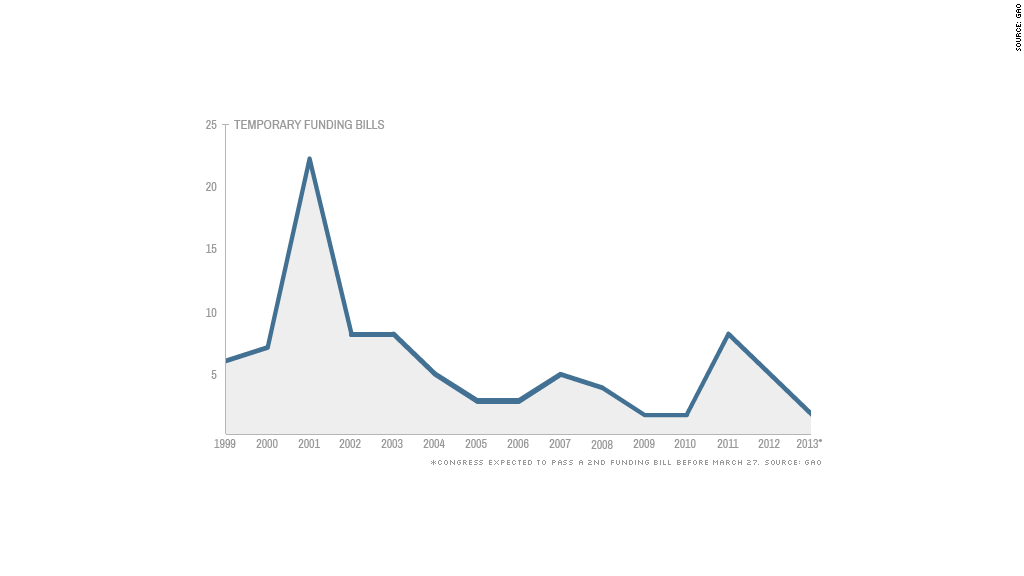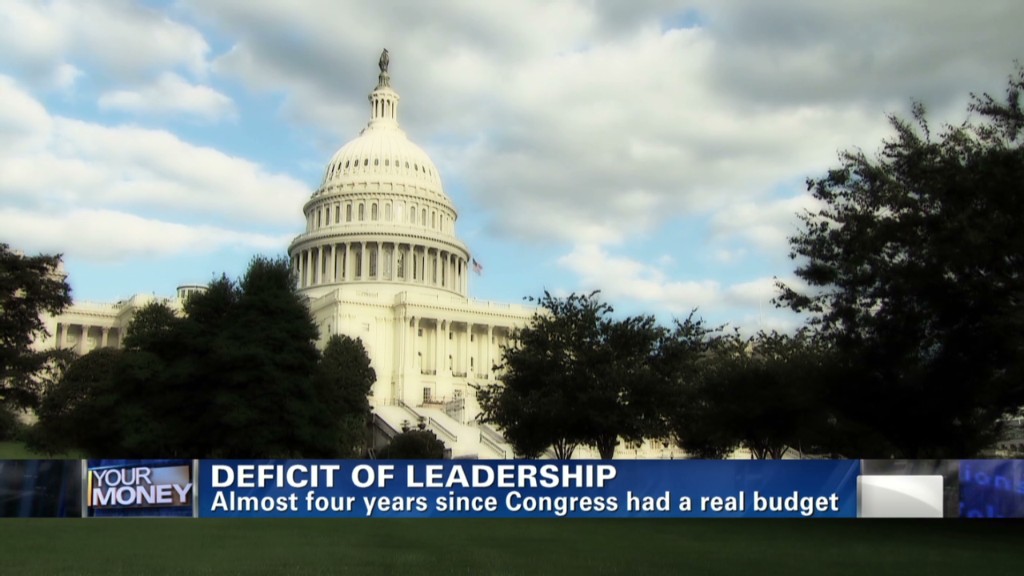
Congress is expected to soon sign off on a bill to continue funding the federal government through the end of the fiscal year.
That's good, because if they don't, funding would run out on March 27. Unfortunately, the just-in-time save by lawmakers reflects a bigger problem: The bipartisan addiction to temporary funding bills in place of passing full-year spending bills.
Congress has resorted to the use of "continuing resolutions" in all but three of the past 30 years, according to the Government Accountability Office. Between 1999 and 2012, Congress passed 87 of them. Another two will be added to that tally for this year.
As with all bad habits, there can be negative consequences to what in Washington they call "CRs."
In any given year federal agencies may have to operate under multiple CRs of varying lengths. Since 1999, they've authorized funding anywhere from 1 day to 227 days.
The GAO highlighted several problems created for agencies operating under CRs. Among them:
Inability to move ahead: Unless Congress specifically includes permission to do so, a CR may prevent an agency from starting new activities and projects.
Delays in hiring and the issuing of contracts: That can lead to increased costs for projects, delays in services and fewer high-quality applicants.
Distorted spending: A CR may not leave enough time to spend money on high-priority needs, such as hiring new staff. So agencies could end up spending the money on lesser priorities that can be purchased or accomplished more quickly.
Lost productivity, wasted time: "[A]gencies reported performing additional work to manage within CR constraints, such as issuing shorter term grants and contracts multiple times," the GAO report said.
In other words, a 30-day CR could mean issuing a 30-day contract or grant that then needs to be re-upped every time a new CR is passed.
The Veterans Health Administration, for example, estimates a 30-day CR "resulted in over $1 million in lost productivity at VA medical facilities and over $140,000 in additional work for the agency's central contracting office," according to GAO.
So why do lawmakers continue to undermine government efficiency? Perpetual fights over spending.
Technically, they pass CRs whenever they fail to enact any or all of the 12 appropriations bills required before the start of a fiscal year on Oct. 1. Those bills authorize what government agencies may spend in the upcoming year.

And they usually fail to enact appropriation bills on time, if at all. For 2013, no appropriations bills have been enacted as of mid-March, halfway through the fiscal year.
The story may not be much different for 2014, which Congress has just begun to address.
Each chamber is likely to pass its own 2014 budget resolution by April 15. Such a resolution sets the top lines for spending as well as budget priorities. But the House and Senate resolutions are so different from each other, it will be very difficult to reconcile them.
That means the appropriations committees in each chamber will look to the Budget Control Act, which set spending levels for 2014 through 2021. And those levels assume that the discretionary spending cuts that went into effect on March 1 remain in effect.
So "things are going to be really, really tight," said Rudolph Penner, a former Congressional Budget Office director.
That means there are going to be strong disagreements over who should get squeezed the most, noted budget expert Charles Konigsberg.
Those fights could go down to the wire, at which point lawmakers may again decide to pass a temporary CR for the start of fiscal year 2014.
Wash, rinse, repeat.


